By Jeffrey A. Rendall; Images by TaylorMade Golf
CARLSBAD, CA – Let’s face it, as golfers, we’re mostly creatures of tradition and culture. We tend to like using the same brand of clubs, playing at the same courses and even teeing it up with the same foursome – but sometimes, a little change in perceptions is a good thing.
Such is the case for TaylorMade Golf’s latest line of ‘white’ golf clubs, headlined of course by its R11 and Burner 2.0 drivers – but the ‘white’ theme doesn’t end there. Just turn on any professional golf tournament these days and you’ll see guys like Rory Sabbatini and Jason Day stroking putts with a white putter as well.
White putters have been around a while, so seeing the color on the green (and in golf balls of course) isn’t exactly shocking, but it was hard to resist a double-take when seeing a white driver. How can that be?
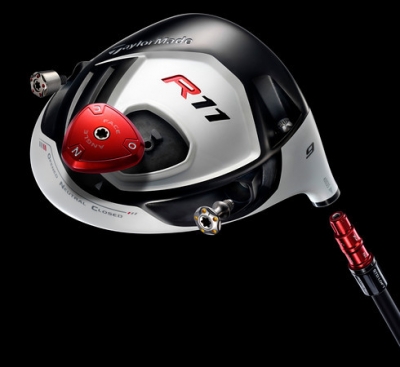 |
TaylorMade’s Senior Director of Product Creation, Tom Olsavsky says the company’s latest drivers are more than just a new pigment. “We introduced a white line of metal woods for its increased visibility, of course, but we really believe there’s a science to it as well.”
Science? It’s just a coat of paint, right?
Not exactly. “The fact is, the white clubs allow for better alignment. We’ve received a lot of feedback over the years indicating that alignment – specifically with clubs like woods and putters – is really critical because you have such a large amount of area on the head, and you don’t see much of the face (or the loft) of the club,” Olsavsky explained.
So TaylorMade did a series of studies using different color combinations, and found that if there’s a stark contrast between the crown and the face (note: the R11’s and Burner 2.0’s face is black), lining up the club becomes much easier. That was our experience as well, though it can’t be said our input contributed to the study sample.
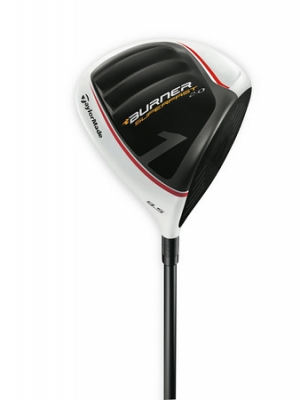 |
Okay, so you can line up the club easier – but how are people going to react to a white driver? Seeing as most people don’t even like to change the color of their golf shoes, how can they be expected to take a leap of faith into a white driver head?
Again, Olsavsky supplies the answers. “We showed our test subjects a number of colors as well as a number of color combinations – and we found that in most cases, you’d see about a 20% rejection in a focus group on the white color.”
That was before anyone hit the driver. It turns out the 20% (‘rejection’) was pretty consistent both on Tour and in the market – a number TaylorMade was willing to accept because the company was covering about 35% of the metal wood market at the time (it’s subsequently gone up to about 44%). Olsavsky said that the 20% ‘unfavorable’ was acceptable, because that would likely be part of the percentage that wasn’t buying their products anyway.
But they also figured that once people hit the clubs and used the R11’s adjustability to ‘tune’ their driver to their swing -- they’d even potentially capture part of that 20% who’d said they were initially turned off by the white color.
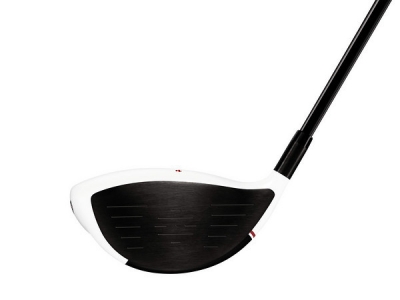 |
Looking at what’s happened on Tour, the numbers bear that out. “We’re getting about 80% conversion rate into the white in the current year product on Tour,” Olsavsky explained. “Because guys like their old clubs and they’re playing well with them, it’s usually about a 60% rate of switching to the current product. But once they’ve tried the white, and found that it really is easier to line it up properly, they’re choosing it.”
As striking as the white has proven to be, another reason why you see so many ‘R11’ hats on Tour and clubs in the bag is the club’s amazing versatility. The club’s predecessor (the R9 series) was a leader in the industry due to its 24 ways to adjust it, but the R11 boasts 48 different combinations – enough to satisfy just about any picky player’s appetite.
The main difference between the new and the old is the R11’s sole plate. Again, Olsavsky expands on it: “Even though the R9 products were very adjustable, what we found in many cases was players could dial in the loft, but then they’d complain that they really didn’t like the looks at address – so the sole plate allows for golfers to open or close the face if they like, just by turning the sole plate.”
In other words, you’ve got ‘draw bias’ and ‘fade bias’ in your bag now in addition to just about every other combination that you can dream up. If you can’t dial in your swing with the R11, get a new swing, not a new driver.
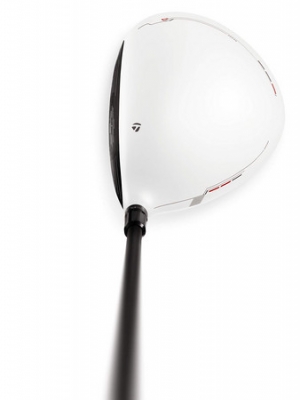 |
Obviously, the idea behind so much adjustability (you also have two different weights on the bottom, as well as eight different shaft hosel settings – all controlled by one multi-purpose wrench) is to allow for a better fit. And a better fit is going to give you more distance off the tee.
It can even be called a ‘head thing.’ “So that’s the benefit of having that third component, is we’re decoupling the face angle from the loft, and we’re giving the golfer more choices on how to set up their golf club,” Olsavsky lectured. “That results in what we call the ‘psychology of fitting.’ When you go through a fitting process with a golfer, once you dial it in, they’re going to hit it farther.”
If you believe it, you’re more likely to do it. Just ask ‘Tin Cup’ Roy McAvoy.
A side benefit of the R11’s adjustability is it allows retailers to stock fewer ‘combinations’ of clubs (it only comes in two ‘standard’ club lofts), since there’s a way to ‘fix’ just about everything on the club during the fitting routine. Olsavsky insists that the shaft is still an important player in the process, even with all the adjustability, so that’s one factor in play when trying to choose which R11 might be right for you.
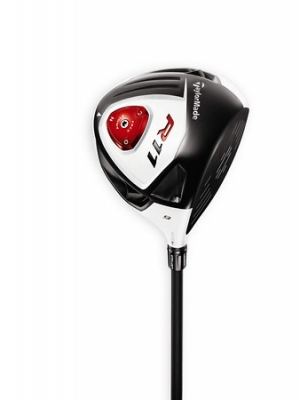 |
The R11 is joined by the latest in another vaunted TaylorMade driver series, the Burner 2.0, which also offers the white color and the most up-to-date technology in a club franchise that’s been around for a long, long time.
The first thing I noticed was how light the Burner 2.0 is – and Olsavsky confirmed that that’s by design, too. “The Burner franchise is really about speed, and how do you get more speed and therefore more distance for the golfer. For a big percentage of the golfers out there, a lighter club will hit the ball farther (which has been reinforced by independent tests from magazines, etc…).”
Olsavsky said the Burner has been on a lightweight platform since 2007, but the company continues to incrementally improve the components to go even lighter. The proof’s found on the scale, as the 2.0 version weighs only 279 grams – that’s not many grams in the world of golf clubs. (Note: the R11 is not a lightweight club, by contrast.)
Seeing as TaylorMade just introduced the Burner Superfast last year, one naturally wonders what’s different with the 2.0. Again, Olsavsky elaborates: “The first thing is the white color (which goes without saying) – the original Burner was black. The second thing is, we actually went from a design that was a dual-crown design (the dual crown allows for lowering some of the weight in the top of the head to keep the center-of-gravity low) to a cleaner, more conventional look.”
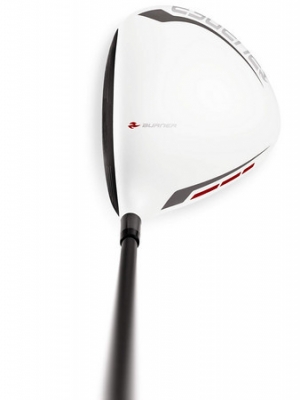 |
The cg was kept low in the 2.0 by re-engineering the inside of the head. Other slight improvements included altering the aerodynamics of the head (for more speed), and, of course, making it a little bit lighter.
Having tried last year’s products and this year’s, we can say that both are superior. We don’t get the tape measure out to determine which one works best for us, but we can say the white color is certainly appealing and it really does seem easier to line-up with the target. TaylorMade has clearly hit another homerun (or should we say, long drive?) with their latest drivers, and the adjustability on the R11 is fun to work with.
One ‘drawback’ if it can be called that -- it takes a great deal of time to try and fix on a combination with the R11, so if time is money, be prepared to ‘spend’ some time trying to figure out what does what. We’re confident that it’ll be worth it in the end, but the R11 is a work in progress.
The Burner’s longer shaft also requires some adjustment, though a lot of the drivers in recent years have gone ‘long,’ so it’s not exactly a new concept. The driver is SO light that it forces you to swing easier, which may be one of the best unintended consequences. Highly recommended for folks with slower swing speeds and slower swing rhythms – but we also saw a rather tall gentleman use it and rip it like nothing we’ve hardly ever seen. Wow.
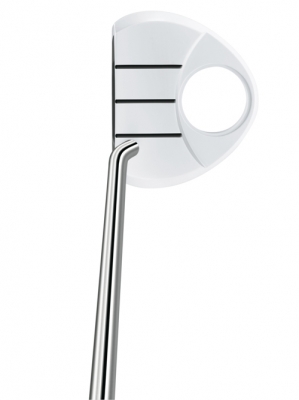 |
TaylorMade’s White putters
It may be a bit redundant, but TaylorMade’s white putters, like the drivers, are extremely easy to align. The company is known for (and no doubt makes its profit margin and reputation) off of hitting monstrous drives, but these putters could change that impression – especially if others’ results are comparable to our own.
Michael Fox, TaylorMade’s Global Product Manager, Putters, expands on the lining-up issue: “The goal for the first Ghost putter, the Corza (the one we tried), was to make it the easiest putter to align. We had data which indicated that 65% of golfers weren’t lined up correctly from 12” out, so we wanted a putter that made it easier to aim square at the hole.”
Fox continues, “To make the easiest putter to aim, it needed to be the easiest putter to see. We enlisted the help of Dr. Steve Heitzman, who works in sports vision to help us with the new line of putters with the goal of making the easiest putter to see. Science shows the contrast is the greatest between a white putter and the green grass. This allowed us to see the edges of the putter clearer – which leads to squaring up to the target.”
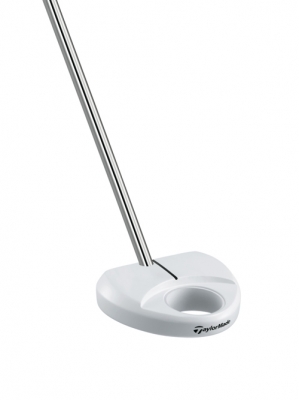 |
There’s also a ‘hole’ in the back of the putter, about the size of a golf ball. Fox says it’s a final check to make sure you’re aligned to the hole. Whatever it is, it seems to work.
Like all somewhat ‘unconventional’ putters we’ve tried in recent years, the looks of the Corza Ghost did not overwhelm us when we first saw it. The lukewarm first impression went away quickly upon bringing it to the greens, however, as the ease of alignment led to making more putts.
I myself made three putts of over 20 feet (including about an 80-foot bomb) in one round using the Ghost (okay, it might have been only 75 feet) – needless to say, it left a very positive impression.
There are also weights on the bottom of the club that can be adjusted if you prefer a lighter or heavier putter, though they’re sold separately and probably only to be recommended by a professional.
The putter also incorporates TaylorMade’s ‘agsi’ technology, which translates to pure roll. Fox says it provides better forward roll than any putter on the market. Though we can’t go that far with personal impressions and trials, we can say that the TaylorMade putters are very easy on the scorecard.
Which, when combined with the new white drivers, just may have a lot more people seeing white very soon.
Details:
TaylorMade’s drivers (R11 and Burner 2.0) and white putters
Available at your higher-end golf retailers and club pro shops.
Check out more information about TaylorMade products at: www.taylormadegolf.com.
TaylorMade became famous for pioneering metal woods, but the company now produces everything from metal woods to wedges to putters. And since joining with Adidas (and Ashworth), don’t forget footwear and clothing. Check out the website for more information.
| Related Links | Comments on this article? | |
|
Maryland National Golf Club Hollow Creek Golf Club Rocky Gap Resort PB Dye Golf Club in Ijamsville Whiskey Creek Golf Club |
E-mail Jeff Rendall, Editor: jrendall@golftheunitedstates.com |











